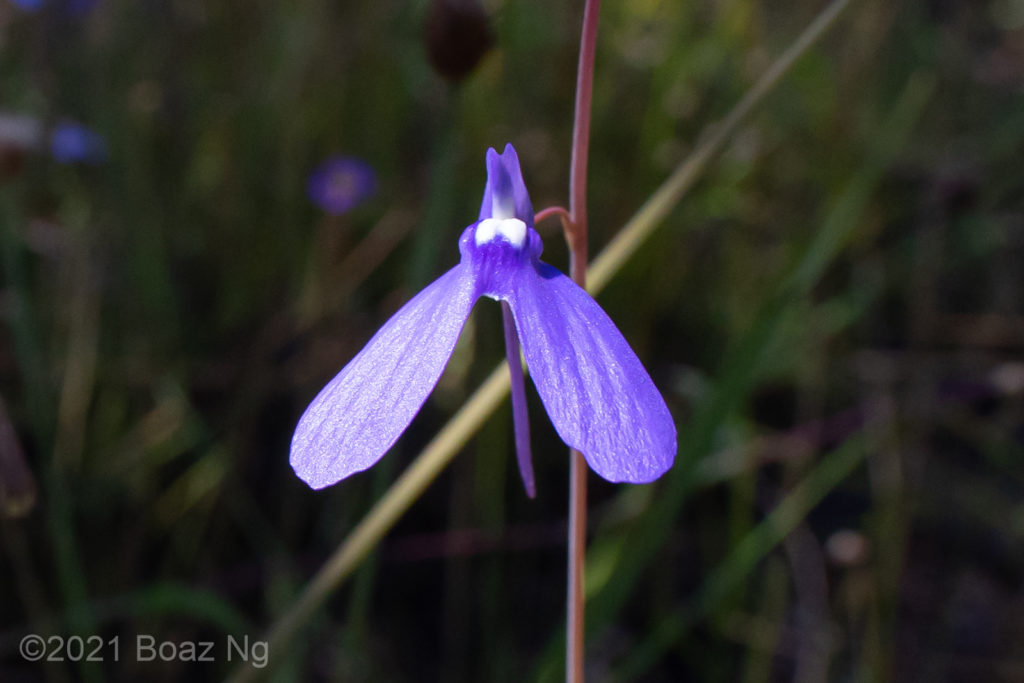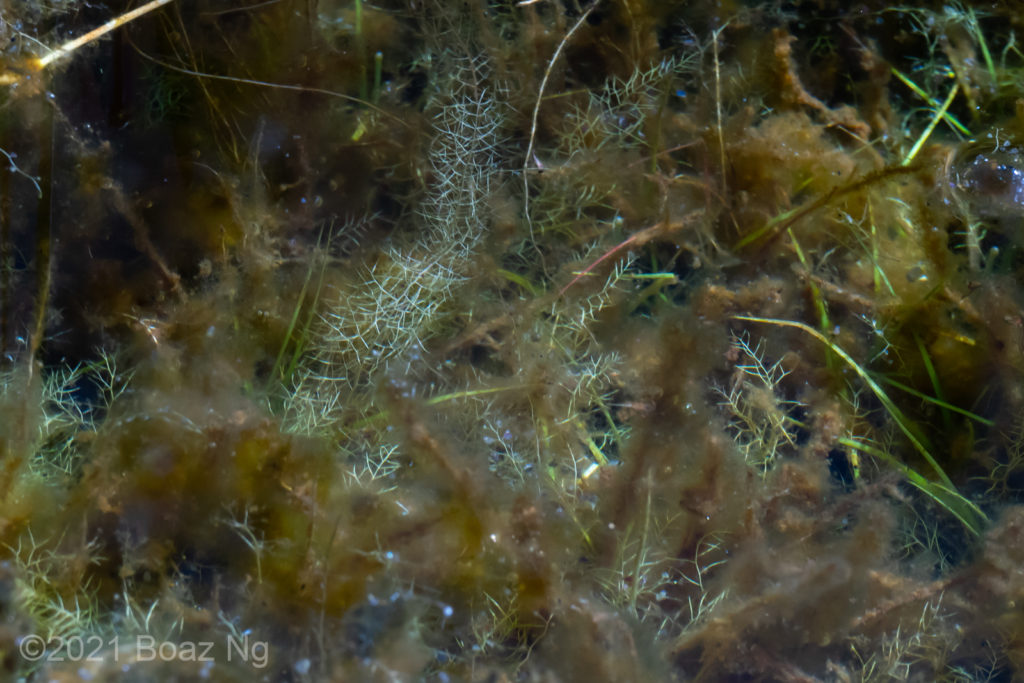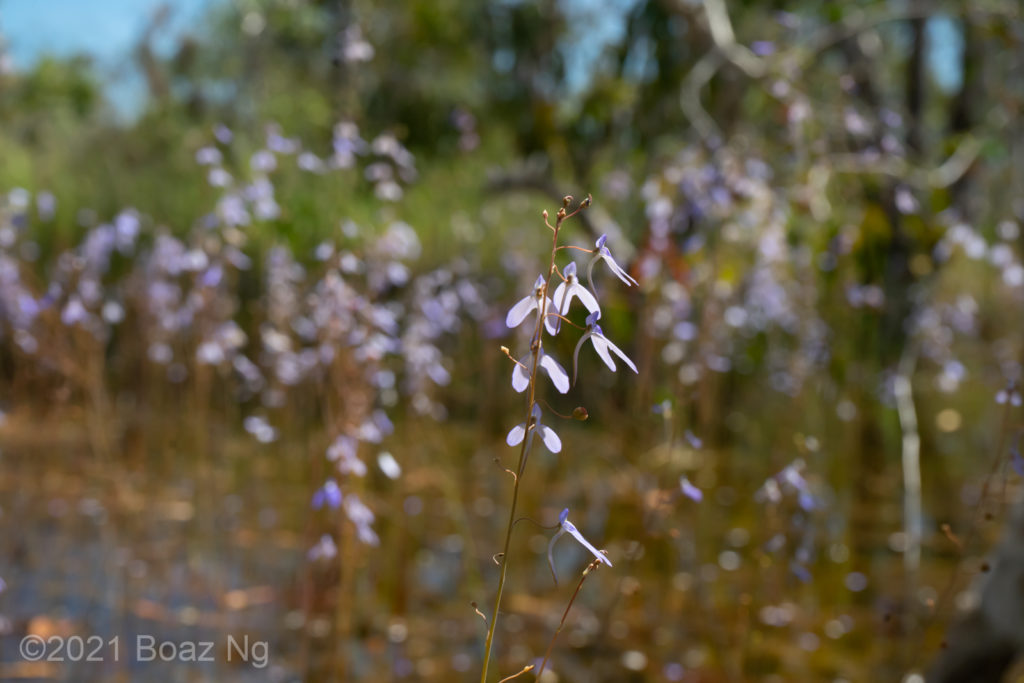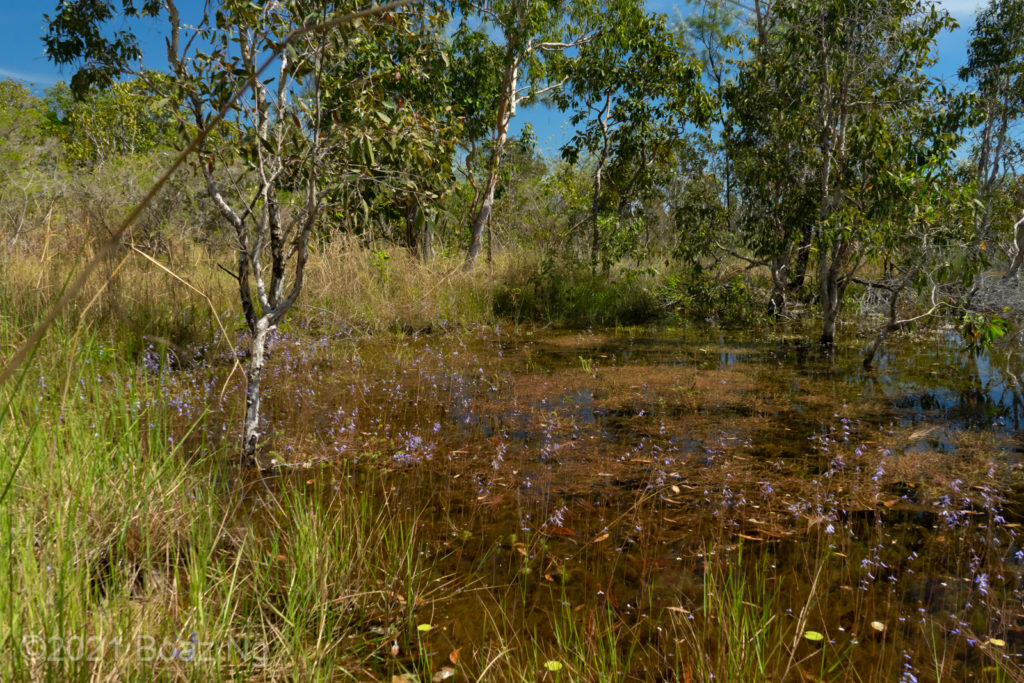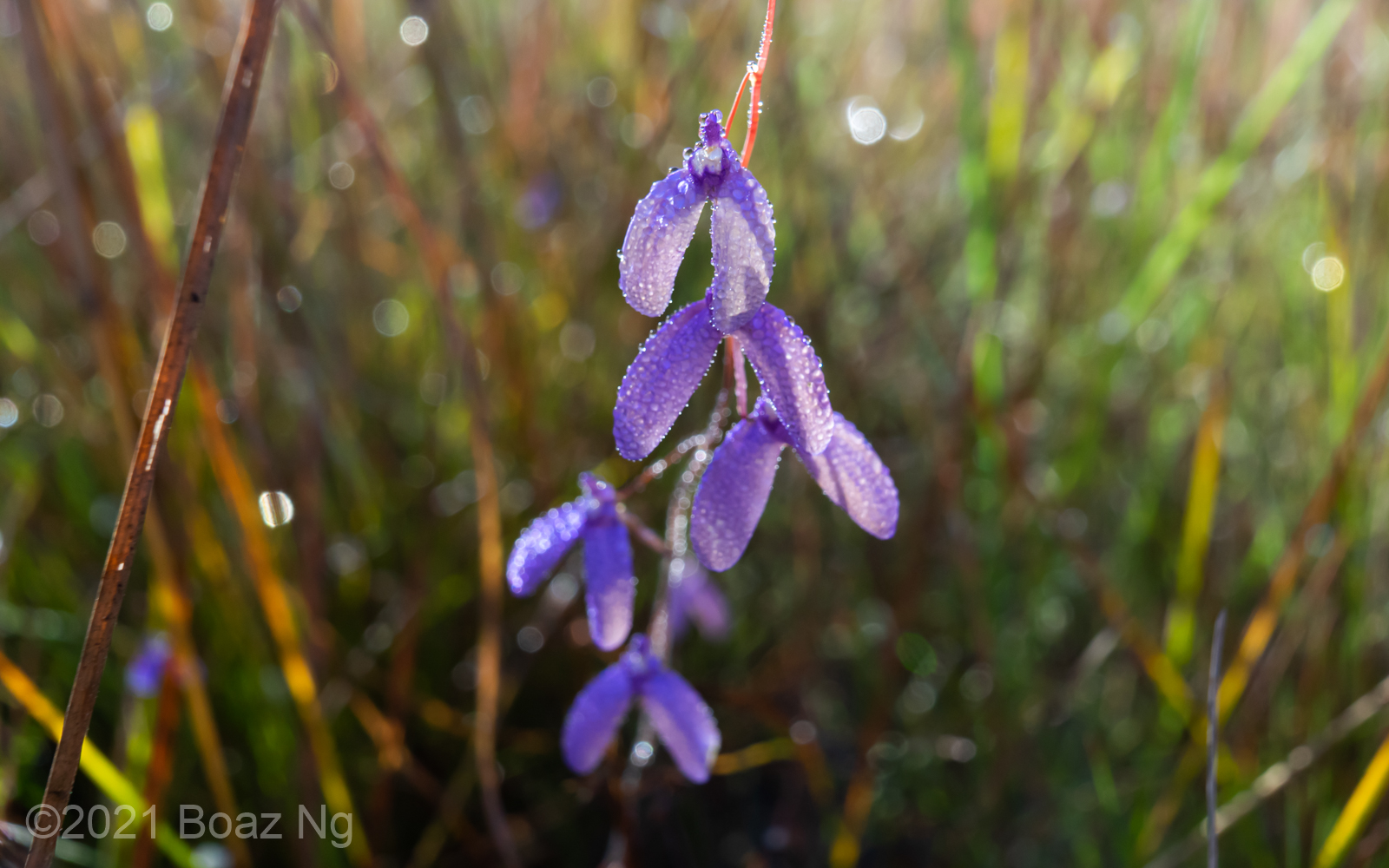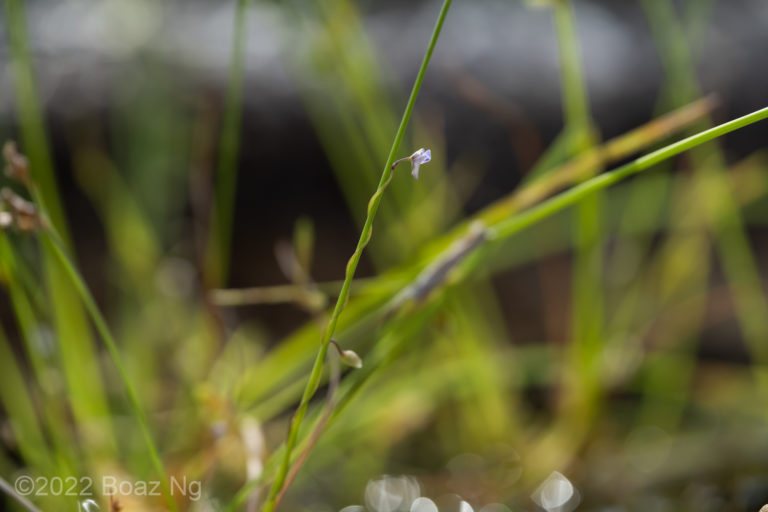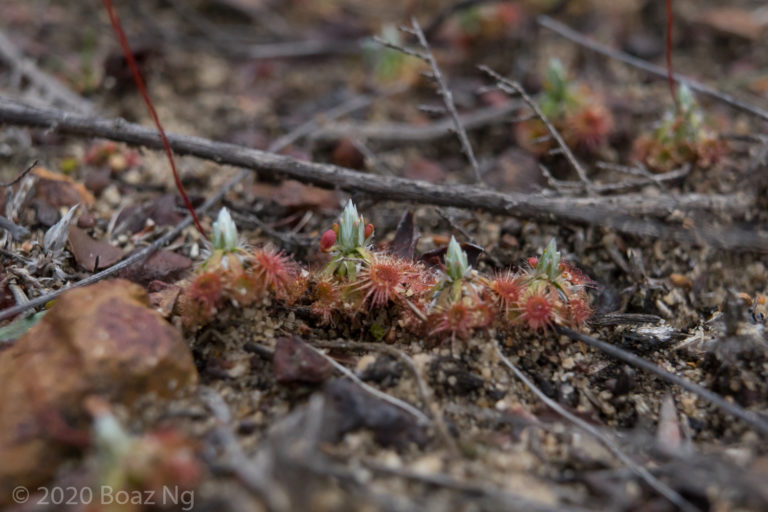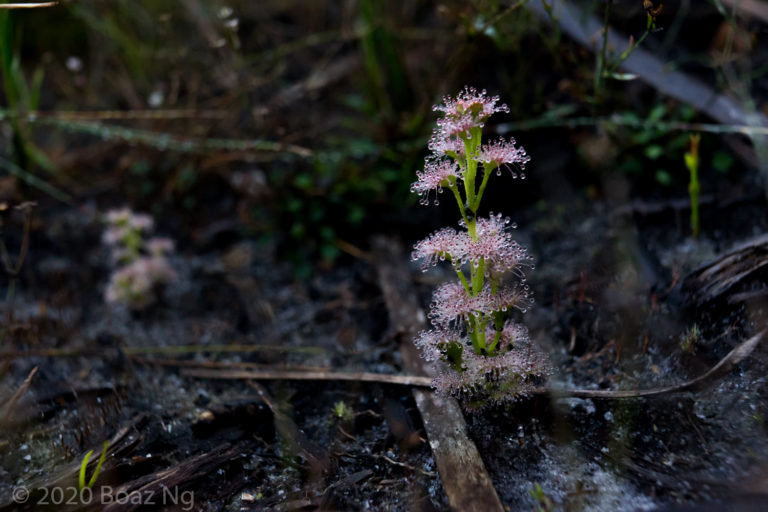Utricularia leptoplectra is an terrestrial bladderwort endemic to monsoonal regions of the Northern Territory and Western Australia. The species is named for its thin (leptos) nectary spur (plektron).
U. leptoplectra is easily recognised by its distinctively shaped medium sized blooms. The lower corolla lip (see: notes on morphology) is deeply divided into two lobes in the shape of a boomerang. A bulbous protruberance is present at the palate. The upper corolla lip is small. The nectary spur is very long and thin. The blooms are coloured purple at the front, with backs that range from white, yellow or orange. The leaves are deeply divided with arms that emerge along a central vein.
The species grows in shallow water at the edges of seasonal billabongs and melaleuca swamps, as well as in seasonally inundated grass plains. When the dry season arrives, the plants are known to put on impressive en mass flowering displays as the waters recede.
The blooms of U. leptoplectra are unlike any other species of bladderwort and are easily distinguished by its boomerang shaped blooms. It is closely related to U. biloba and U. limosa, with these species forming the Utricularia section Nelipus. This section is united by its bulbous palate and two-lobed lower corolla lip.
